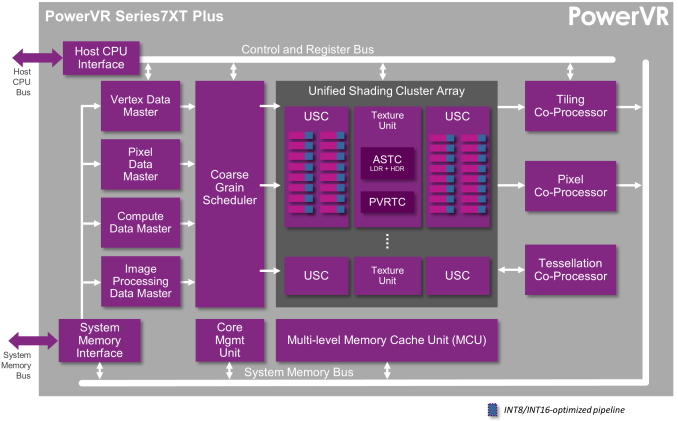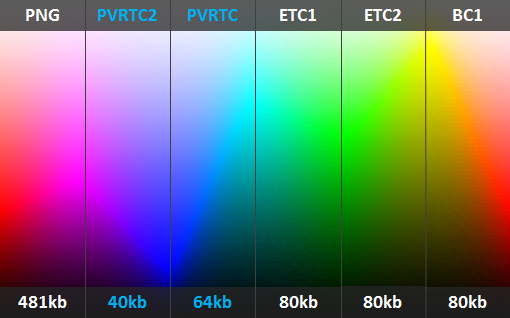Apple To Develop Own GPU, Drop Imagination's GPUs From SoCs
by Ryan Smith on April 3, 2017 6:30 AM ESTImagination: Patents & Losing an Essential Contract
As for Imagination, the news is undoubtedly grim, but not necessarily fatal. Imagination has never hidden the fact that Apple is their most important customer – even labeling them as an “Essential Contract” in their annual report – so it’s no secret that if Apple were to leave Imagination, it would be painful.
By the numbers, Apple’s GPU licensing and royalties accounted for £60.7M in revenue for Imagination’s most recent reporting year, which ran May 1st, 2015 to April 30th, 2016. The problem for Imagination is that this was fully half of their revenue for that reporting year; the company only booked £120M to begin with. And if you dive into the numbers, Apple is 69% of Imagination’s GPU revenue. Consequently, by being dropped by Apple, Imagination has lost the bulk of their GPU revenue starting two years down the line.
| Imagination Financials: May 1st, 2015 to April 30, 2016 | |||
| Company Total | GPUs Total | Apple | |
| Revenue (Continuing) | £120M | £87.9M | £60.7M |
| Operating Income | -£61.5M | £54.7M | |
The double-whammy for Imagination is that as an IP licensor, the costs to the company of a single customer is virtually nil. Imagination still has to engage in R&D and develop their GPU architecture and designs regardless. Any additional customer is pure profit. But at the same time, losing a customer means that those losses directly hit those same profits. For the 2015/2016 reporting year, Apple’s royalty & licensing payments to Imagination were greater than the profits their PowerVR GPU division generated for the year. Apple is just that large of a customer.
As a result, Imagination is being placed in a perilous position by losing such a large source of revenue. The good news for the company is that their stakes appear to be improving – if slowly – and that they have been picking up more business from other SoC vendors. The problem for Imagination is that they’ll need a drastic uptick in customers by the time Apple’s payments end in order to pay the bills, never mind turning a profit. Growing their business alone may not be enough.
Which is why Imagination’s press release and the strategy it’s outlining is so important. The purpose of Imagination’s release isn’t to tell the world that Apple is developing a new GPU, but to outline to investors and others how the company intends to proceed. And that path is on continued negotiations with Apple to secure a lesser revenue stream.
The crux of Imagination’s argument is that it’s impractical for Apple to develop a completely clean GPU devoid of any of Imagination’s IP, and this is for a few reasons. The most obvious reason is that Apple already knows how Imagination’s GPUs work, and even though Apple wouldn’t be developing a bit-for-bit compatible GPU – thankfully for Apple, the code app developers write for GPUs operates at a higher level and generally isn’t tied to Imagination’s architecture – those engineers have confidential information about those GPUs that they may carry forward. Meanwhile on the more practical side of matters, Imagination has a significant number of GPU patents (they’ve been at this for over 20 years), so developing a GPU that doesn’t infringe on those patents would be difficult to do, especially in the mobile space. Apple couldn’t implement Imagination’s Tile Based Deferred Rendering technique, for example, which has been the heart and soul of their GPU designs.
However regardless of the architecture used and how it’s designed, the more immediate problem for Apple – and the reason that Imagination is likely right, to an extent – is replicating all of the features available in Imagination’s GPUs. Because Apple’s SoCs have always used GPUs from the same vendor, certain vendor-specific features like PowerVR Texture Compression (PVRTC) are widely used in iOS app development, and Apple has long recommended that developers use that format. For their part, Apple is already in the process of digging themselves out of that hole by adding support for the open ASTC format to their texture compression tools, but the problem remains of what to do with existing apps and games. If Apple wants to ensure backwards compatibility, then they need to support PVRTC in some fashion (even if it’s just converting the textures ahead of time). And this still doesn’t account for any other Imagination-patented features that have become canonized into iOS over time.
Consequently, for Imagination their best move is to get Apple to agree to patent indemnification or some other form of licensing with their new GPU. For Apple it would ensure that nothing they do violates an Imagination patent, and for Imagination it would secure them at least a limited revenue stream from Apple. Otherwise Imagination would be in a very tight spot, and Apple would face the risk of patent lawsuits (though Imagination isn’t making transparent threats, at least not yet).












144 Comments
View All Comments
pjcamp - Monday, April 3, 2017 - link
Shorter Apple: "We'll use your IP until we understand how to clone it. Then FU."name99 - Monday, April 3, 2017 - link
https://arstechnica.com/apple/2016/03/apple-acquir...So you just KNOW it was Apple's fault?
vladx - Tuesday, April 4, 2017 - link
Since when IMG has to bow down to Apple and accept any offer thrown their way? IMG's IP is strong and no doubt Apple is gonna lose badly in the courts.webdoctors - Monday, April 3, 2017 - link
This is awesome news, now Apple can do for GPUs what they did for CPUs in the mobile market. Look at ARM CPUs IPC before Apple came along, it was crap compared to Intel.Look at Imagination GPUs compared to ATI/NVIDIA, its complete junk. Now we'll finally get developers creating serious games for the mobile markets instead of being second fiddle to the consoles/desktop segments. Ultimately this will force the Android HW makers to also get serious about SoC GPUs too (and catch up to the Nvidia Shield obviously).
Laststop311 - Monday, April 3, 2017 - link
imagination gpu's are not junk compared to the big discrete gpu's. They use way less power so ofc they aren't going to be as fast but watts per gflop they are doin just fineLaststop311 - Monday, April 10, 2017 - link
infact imagination GPU's are the number 1 best performing low power GPU's that were designed from the ground up to be extremely fast for low power use. They aren't meant to scale up like the big boys and the dont have have to. Specialized hardware is always going to do a better job the hardware the can scale at all power levels.tipoo - Monday, April 3, 2017 - link
How is it complete junk? They're the mobile class leader in perf/watt. They just don't compete in desktop wattages.webdoctors - Monday, April 3, 2017 - link
But they're obviously not perf/watt leaders across the entire V/f curve right?If I had a GPU that was the perf/watt leader at 10nW for VR, you wouldn't care because operating at 10nW isn't very interesting. Same way IMG's design might be fine for 1W, but if you're operating at 10W for a VR device that Apple is potentially targetting or 50W for a console or home appliance, IMG just won't cut it. Ppl who want quality VR aren't expecting to run it off just a 1W GPU.
tipoo - Monday, April 3, 2017 - link
You said "Look at Imagination GPUs compared to ATI/NVIDIA, its complete junk". Not that they don't compete in every spectrum of the wattage curve.prisonerX - Monday, April 3, 2017 - link
And it will cure cancer and everyone will join hands and sing kumbaya...